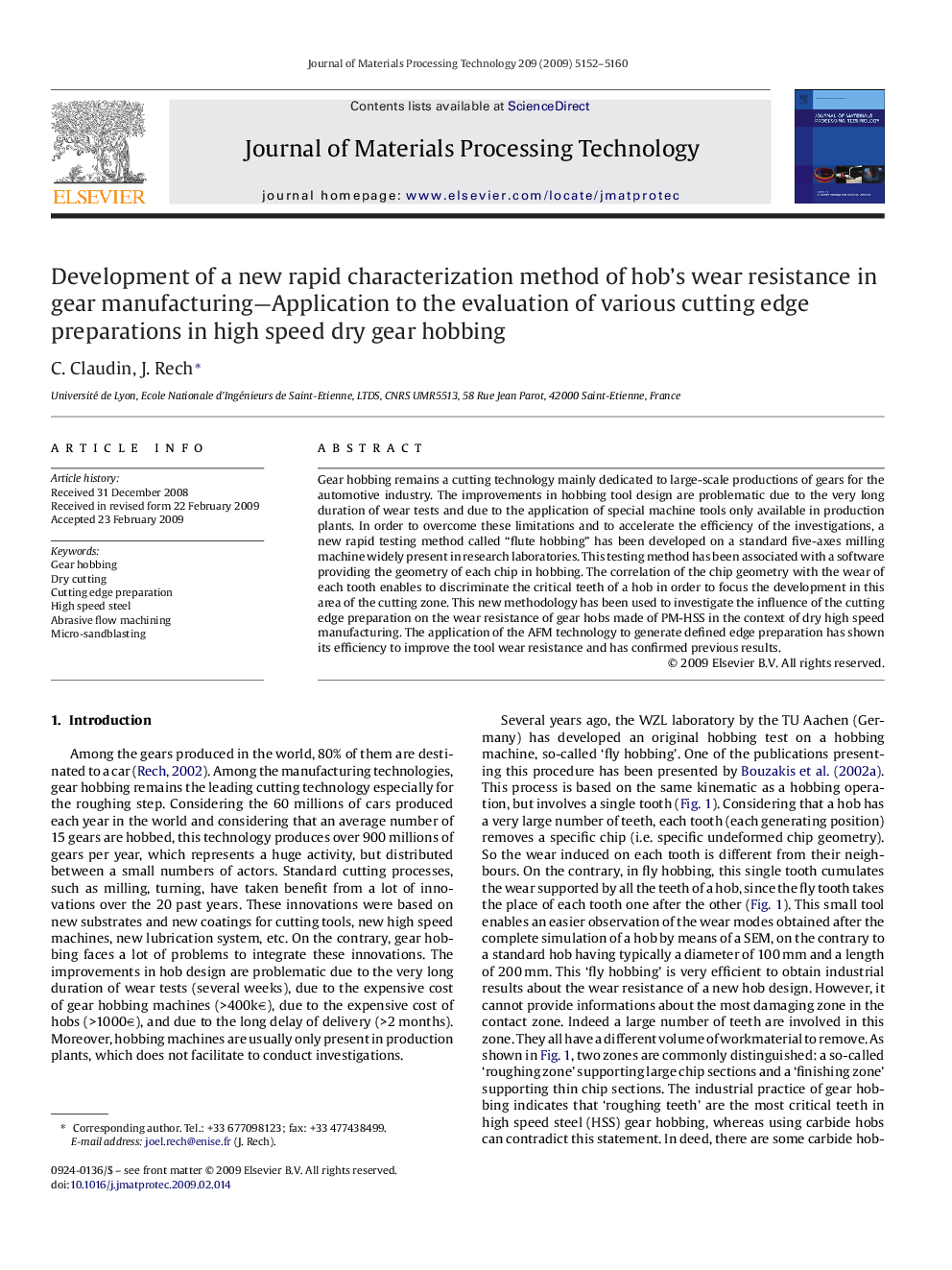| Article ID | Journal | Published Year | Pages | File Type |
|---|---|---|---|---|
| 793329 | Journal of Materials Processing Technology | 2009 | 9 Pages |
Gear hobbing remains a cutting technology mainly dedicated to large-scale productions of gears for the automotive industry. The improvements in hobbing tool design are problematic due to the very long duration of wear tests and due to the application of special machine tools only available in production plants. In order to overcome these limitations and to accelerate the efficiency of the investigations, a new rapid testing method called “flute hobbing” has been developed on a standard five-axes milling machine widely present in research laboratories. This testing method has been associated with a software providing the geometry of each chip in hobbing. The correlation of the chip geometry with the wear of each tooth enables to discriminate the critical teeth of a hob in order to focus the development in this area of the cutting zone. This new methodology has been used to investigate the influence of the cutting edge preparation on the wear resistance of gear hobs made of PM-HSS in the context of dry high speed manufacturing. The application of the AFM technology to generate defined edge preparation has shown its efficiency to improve the tool wear resistance and has confirmed previous results.
